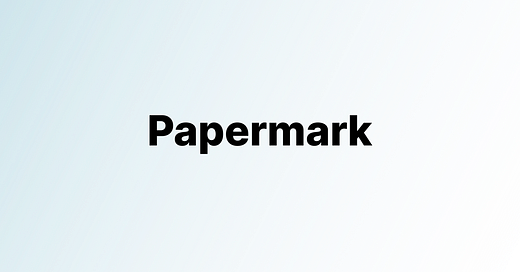Papermark: Revolutionizing Document Sharing with Open-Source Innovation

Company profile
Company business details
Motivation to build the product
The founders were motivated by the need for privacy and control in document sharing, as well as the desire to create a collaborative community around the product. They recognized that existing solutions lacked transparency and user input, which sparked the idea for an open-source alternative.Problem that their product solves
Papermark solves the problem of limited insights into document consumption and the need for privacy in document sharing. The end users are individuals and organizations that require secure and insightful document sharing solutions. Solving this problem is important for them as it enhances their ability to understand audience engagement and maintain control over their shared content.Their unfair advantage
Papermark's unfair advantage lies in its open-source nature, which allows for community contributions and direct user input on the feature roadmap, ensuring that the product evolves according to user needs.Strategies
Pre-Launch (Product Development & MVP)
Open Source Development
Mark Zeit, the founder of Papermark, decided to build the application as an open-source project from the very beginning. This decision was rooted in his philosophy of giving back to the open-source community, as he had benefited from it throughout his programming career. By making Papermark open-source, he aimed to encourage contributions from other developers, allowing them to learn from a fully functional application rather than just a library or backend functionality. This approach not only fostered community engagement but also provided transparency and trust among users, who could access the code and contribute to its development.
Social Media Engagement for Validation
Marc, the founder of Papermark, engaged with his audience on Twitter by making a bet with his wife that a tweet would receive 50 likes. The tweet ended up receiving 265 likes, which validated his idea for an open-source project. This engagement not only provided him with the confidence to move forward but also created initial buzz around the project before its official launch.
Personal Outreach and Social Media Engagement
In the early stages, the founder focused on personal outreach by sending messages to people they knew, which helped to build initial traction. They also committed to posting updates and features on Twitter almost daily, creating a consistent presence and engaging with potential users. This strategy was crucial for generating first awareness and establishing a strong domain presence, which laid the groundwork for future SEO efforts.
Launch Stage
Community Feedback Integration
During the launch stage, Mark actively sought feedback from the Papermark community and customers. One of the most requested features was the ability to share Notion pages through Papermark. In response to this demand, Mark and his team quickly implemented this feature, allowing users to grab any Notion link and use it within the Papermark platform. This responsiveness to user feedback not only enhanced the product's functionality but also strengthened the relationship with the community, demonstrating that their input was valued and acted upon.
Custom Domain and Security Features
In the launch stage, Papermark introduced several features to enhance user experience and security. Users could add custom domains for their shared documents, which allowed for branding and personalization. Additionally, Mark implemented security features such as password protection and email walls, giving users control over who could access their documents. These features were developed in response to user feedback, ensuring that the platform met the needs of its audience while also providing a professional and secure sharing experience.
Learn more about Papermark

Building Papermark: A DocSend Alternative with Prisma ORM

Papermark



